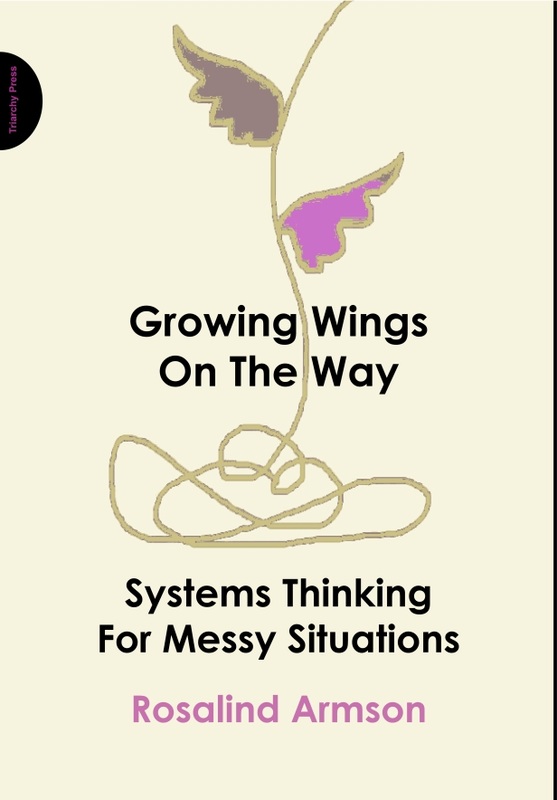Rich PicturesRich pictures (which came into Systems Thinking from Peter Checkland’s Soft Systems Methodology) are an ideal starting point for dealing with messy situations. They attempt to capture everything you know about the messy situation without imposing any structure or analysis. Rich pictures launch your ‘finding out’. They depict things, ideas, people and connections, indeed everything you perceive to be part of the situation you are concerned with. They also contain representations of more subjective elements of the situation: character, feelings, conflicts and prejudices (literally ‘pre-judgements’). A rich picture is just that, a rich pictorial representation of the situation in all its messiness.
Many people are wary of drawing their first rich picture. Some object that they cannot draw. The good news is that you don’t need to have any artistic talent. Indeed, my experience is that sometimes artistic people get sucked into creating an aesthetically pleasing picture rather than sketching rich, interconnecting visual notes. The good news is that if you could draw when you were five, then you have all the talent you need to draw a good rich picture. Creating a rich picture is one of the best ways of experiencing its benefits. As with many systems-thinking ideas, experiential learning is more convincing, more reliable and more fun than simply reading about it. I invite you to draw a rich picture of your own messy situation. There are very few ways of drawing a bad rich picture and lots of ways of drawing good ones. Here is one (there are lots more in the book): This rich picture, drawn by a project manager, concerns the fragmentation and conflicting priorities of his project. Notice the vivacity of the images. Even without knowing much about the issues, it is possible to discern some of the concerns and experiences he is encountering. This is how you set about drawing one. If you have already identified a messy issue you want to work on, prompted perhaps by the Introduction or by Chapter 1, make it the subject of your picture. Gathering materialsStart with a large piece of paper and some coloured pens or crayons. Ideally use a sheet of A1 (ANSI D, elephant, double demy) flip-chart (butcher’s) paper or failing that, a sheet of unlined A3 (ANSI B, ledger, tabloid). Of course, you can ignore this guidance and work with a ball point on the back of an envelope or on a napkin. These are not ideal for your first rich picture but they are perfectly adequate in an emergency. Getting startedThen simply represent everything you know about the situation. The situation is full of resources for, as well as obstacles to, taking action. A key tip here is to make sure there is plenty of activity in your picture. Don’t just draw stick-figure people, show them doing something and show some of their context – where they do it. Include resources, tools, equipment, buildings, ideas, dreams, processes and objects. Use metaphors. Show interconnections. Make it rich. My sister and I started by drawing Mum, at the centre of the picture. We drew her in her armchair, which is where she spent most of her time. We next tried to capture her situation by depicting her walking frame, the cats, money going down the drain, her helpers and so on. Things for possible inclusion in a rich picture interfaces and boundaries ~ targets, goals, aspirations ~ resources ~processes ~ people ~ progression ~ roles ~ relevant history ~organisations, departments, teams ~ issues ~ needs ~ thoughts and ideas~obstacles ~ concerns, reactions, responses ~ conflicts ~ dreams ~alliances ~ time ~ tools and equipment ~ buildings ~ objectsSome people get ‘white-paper panic’. If you find it difficult to start, just draw a squiggle in the middle of the page. It will break the intimidating power of the empty white paper. Don’t do preliminary sketches. The first rich picture will be good enough. You are drawing mainly for your own use; it doesn’t have to make sense to anyone else. Don’t get hung up about ‘getting it right’ or using the right symbols. There are not many ways to get it wrong. Here are some of the very few rules about rich pictures to get you started:
These rules and other suggestions for drawing rich pictures are explained in much more detail in the book. |
More about the book:
Book Homepage
Buy the book Diagrams/Images from the Book Tools & Techniques (Extracted from the book): Rich Pictures Mental Traps Epistemic Awareness Diagrams Complexity Identifying Themes Snappy Systems System Definitions Systems Thinking Skills (Extracted from the book): Enthusiasm Humility Curiosity Respect Further Resources The Author Author video Read the Introduction Related Titles: The Search for Leadership |

